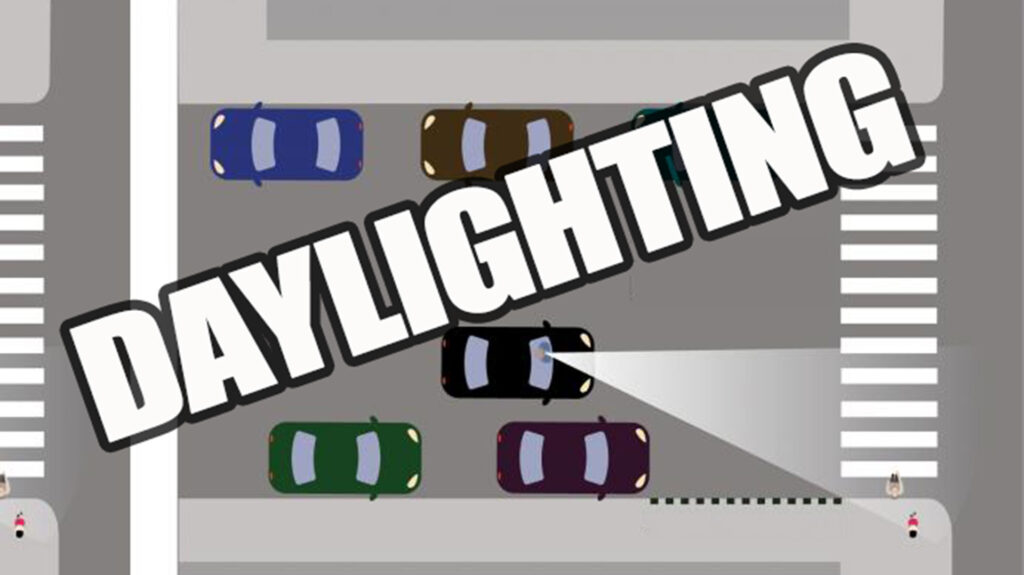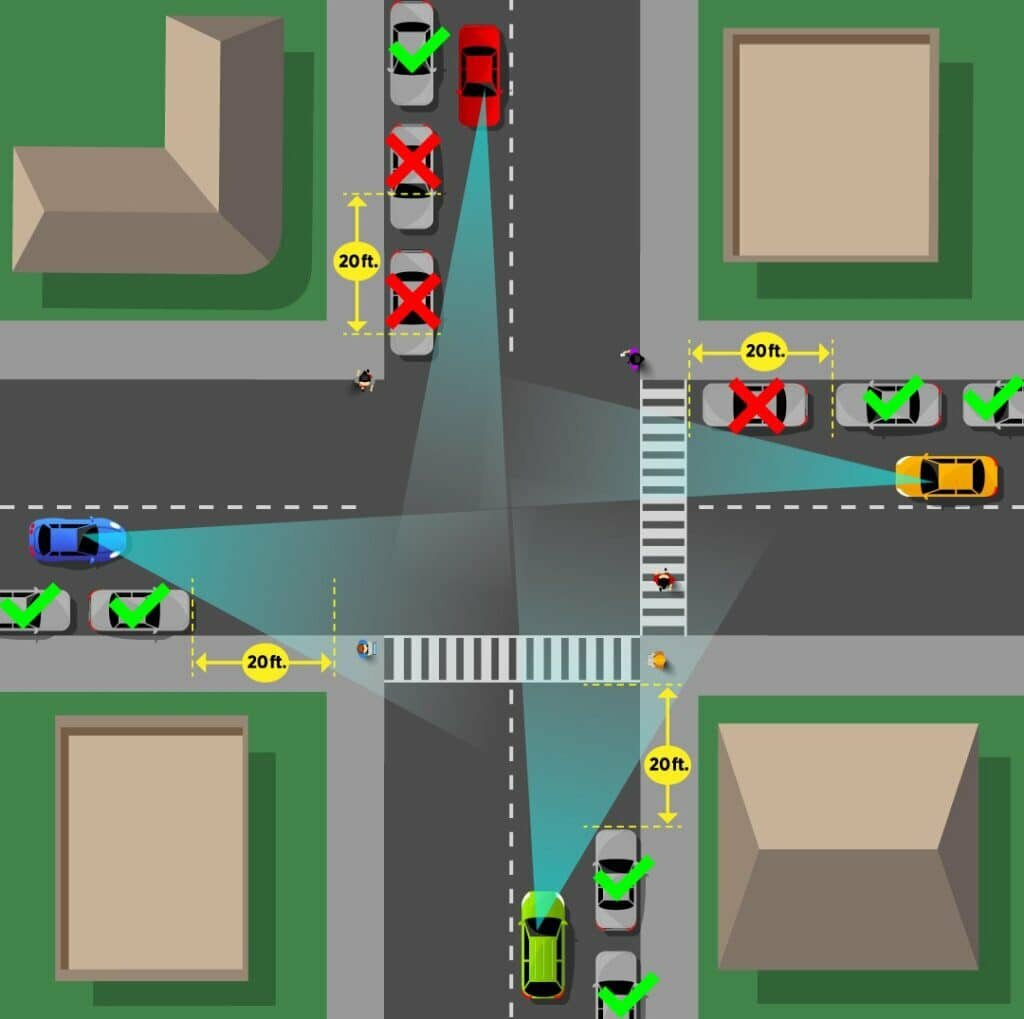
- California’s new daylighting law bans parking within 20 feet of any crosswalk to improve safety.
- The law aims to make vulnerable street users, like pedestrians and cyclists, more visible to drivers.
- Parking fines range from $40 for unmarked spaces to $108 for red-painted curb violations.
Parking in California just got a little trickier—again. With a new statewide daylighting law in effect, drivers will need to rethink where they leave their cars, especially near intersections. The goal? To make pedestrians, cyclists, and other vulnerable road users more visible to drivers. The tradeoff? Fewer on-street parking options in already congested areas.
What is Daylighting?
Daylighting is the practice of keeping the stretch of road leading up to an intersection free of parked cars. In theory, by clearing these spaces, drivers get an unobstructed view of crosswalks, which can be a lifesaver—literally—for those walking, skating, or biking through intersections. Research supports the practice, showing it significantly improves safety by reducing blind spots.
In California, this principle has now been codified into law. As of January 1, 2025, it’s illegal to park within 20 feet of any crosswalk, regardless of whether there’s a red-painted curb or parking meter.
Read: New California Laws In 2025 Target Speeding, Street Takeovers, And More
“By removing visible obstructions for drivers at key locations, this statewide law helps motorists better see the transition point where people walk onto pavement,” city spokesman Matthai Chakko wrote in an email to Berkeleyside.
“While yielding to pedestrians at crosswalks has long been state law, these locations have remained one of the most dangerous places for a person to walk or roll across in their wheelchair.”

Does Daylighting Actually Work?
Hoboken, NJ enacted a similar plan and now sees dramatically fewer pedestrian injuries, and has gone years without a fatality afterward. California hopes to repeat that success. For now, many cities across the state will only issue warnings to drivers. That will continue until March 1 when ticketing drivers will begin. That includes for drivers who park in places that appear to be legal.
Some spaces will still have parking meters and may not have red paint on the curb to denote a ‘no-parking’ zone. Despite that, those who do park in such spaces, within 20 feet of the crosswalk, can receive a ticket.
Those tickets will vary depending on the location. According to KQED, fines for those parked in unmarked but now illegal spaces will have to pay $40. Those who park next to a red-painted curb will pay $108 though.
It’s worth noting that the law only applies to the approach side of the road. Essentially, the space before the crosswalk isn’t legal to park in for a driver but the space directly after a crosswalk on the opposite side of the intersection is. On one-way streets, parking within 20 feet of the crosswalk is illegal on both sides of the road.
This law also applies to mid-street crosswalks. If you thought it was hard to find parking in California before, it’s about to be a whole lot worse. Maybe it’s a better time than ever to get into cycling.





